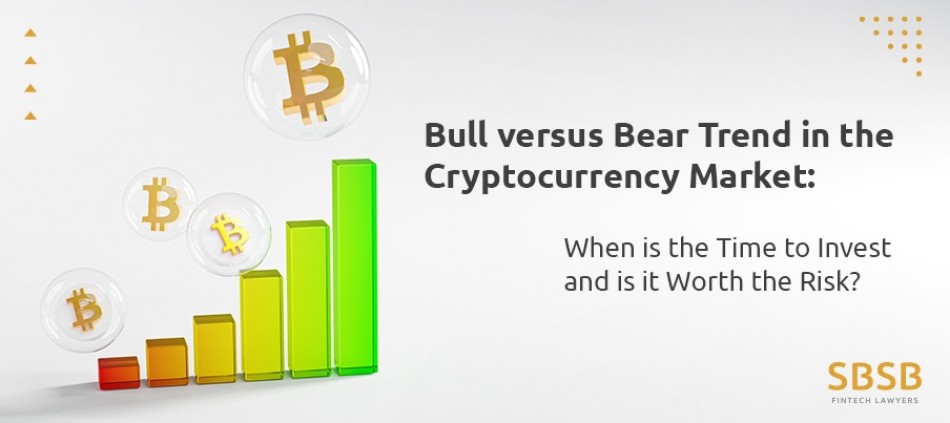Bull versus Bear Trend in the Cryptocurrency Market: When is the Time to Invest and is it Worth the Risk?
The fundamental notions of “bull” and “bear” trends originating from the stock exchange have penetrated the cryptocurrency market…
The fundamental notions of “bull” and “bear” trends originating from the stock exchange have penetrated the cryptocurrency market and represent the tactics of animal attacks in wild nature. Should you ever confuse the terms, you only need to remember that bears wave their paws and halt to fight while bulls lift up their horns and simply run forward. So crypto bears trade for a fall and crypto bulls aim at an exchange rate growth.
A trend, accordingly, is a continuously repeated tendency of price changes in the financial market. This is especially relevant for the cryptocurrency industry, most susceptible to global events which can cardinally change it. Take for instance the Chinese trends in the recent weeks: the mood in the Celestial Empire has been quite low as the bitcoin search queries via WeChat dropped by 7% while the “bear market” combination grew by 102%. DAO-as-a-Service Dora Factory became of the sensational token sales started in China. The project supported by DoraHacks made a public token offering with listings on OKEx, Gate and MXC on March 21st.
And this happens in the Fintech industry every day: new technology and deals crop up, startups are launched, legislative regulations change, and there are attempts of integrating blockchain into various spheres of life, always leaving a mark on the crypto market. So my advice to new players is to make it into the market until it is “overly regulated” since cryptocurrencies are now trending and forecasted to grow.
Bear trend: time to invest or an unjustified risk?
A bearish market or trend means a situation in the marketplace when the price of most currency pairs are headed downside. The majority of traders target to sell currency to ensure profit taking. Figuratively speaking, “a heavy bear is pulling the cryptocurrency rope down with its paws”, causing the coin price to drop. And this is the perfect time to diversify one’s portfolio and enter the crypto market. In a recent talk with an investor I asked whether he invested in startups these days, and he said that investments in crypto and other instruments were much less profitable now. So my recommendation is considering cryptocurrencies as a means to spread investments and thus ensure reasonable risk management.
How does one identify a bearish trend on time?
In a bull market, investors are more confident in the future as they expect prices to continue growing for a certain period of time (although predicting trends is actually quite hard). The key persistent driver for new bull trends is the increasing acceptance of bitcoin and other coins as a payment instrument and investment assets, and usage of blockchain technologies and applications in new business domains. Legislative and tax changes to which the market responds immediately are also important.
Best behavior for beginner investors:
- Should you decide to test your luck in the cryptocurrency market, you need to explore trends, research key indicators and seek advice from professionals. Thorough preparation is the best way to tackle the bear market volatility. While others start panicking and taking rash decisions, you will have a reasonable business approach and will be able to analyze the market situation from a technical point of view. Or you could refer to an advisor and become knowledgeable in basic notions and events in the market.
- Diversify your assets and investment strategies. Even though most investors perceive cryptocurrencies as a nice addition to the traditional asset portfolio such as shares and bonds, many forget about the need to diversify those digital assets. In fact, there are multiple variants of crypto investments which vary significantly in terms of risk and prospects: for tokens, it is reasonable to get a set of reliable tokens such as bitcoin and ether, and a few altcoins with a strong growth potential; tokenized assets — traditional classes of assets, real estate for instance, are tokenized quickly and thus their liquidity is increased. They become more accessible for retail investors while retaining their former potential for stable growth. And there are also initial token offerings (ICO), one of the riskiest crypto investments. Make sure to research as much as possible and only invest in the tokens of companies with a strong reputation and a clear business model which shows exactly how the project is going to benefit the investors.
- Be prepared for market volatility. Surviving in a bear market requires alertness to continuous price leaps. So debts and panic should be avoided, and a standby approach can prove useful sometimes. Understandably, it is hard to sit and wait when a bearish market is rocking. But if you manage to refrain from a panic-driven sell-out, you can live through the period.
Conclusions
Loss and profit are certainly common in the cryptocurrency market.
But with an asset of up to $10,000 and taking the investment process reasonably, you will see that this undertaking can really generate income.
In fact, there are not so many instruments yielding actual profits nowadays: if you compare deposit rates offered by European banks and look at the terms and conditions proposed by Ukrainian and Russian banks, you will get the idea that the chances of earning is slight.
Moreover, depositing a larger amount of savings is even dangerous as the risk of losing them all is quite high.
I would like to stress the modern trends once more. The market is quite volatile now, and there is a selection of countries where crypto transactions are not subject to tax, countries like Singapore, Portugal, Malta, Malaysia, Belarus and Ukraine. Taxes in Europe are massive on the other hand: France imposes a single capital gains tax of 30% on cryptocurrency transactions; in Switzerland there are four types of personal income tax rates ranging from 32% to 57% depending on the income, and the UK charges 20% to 45% of post-transaction tax.










